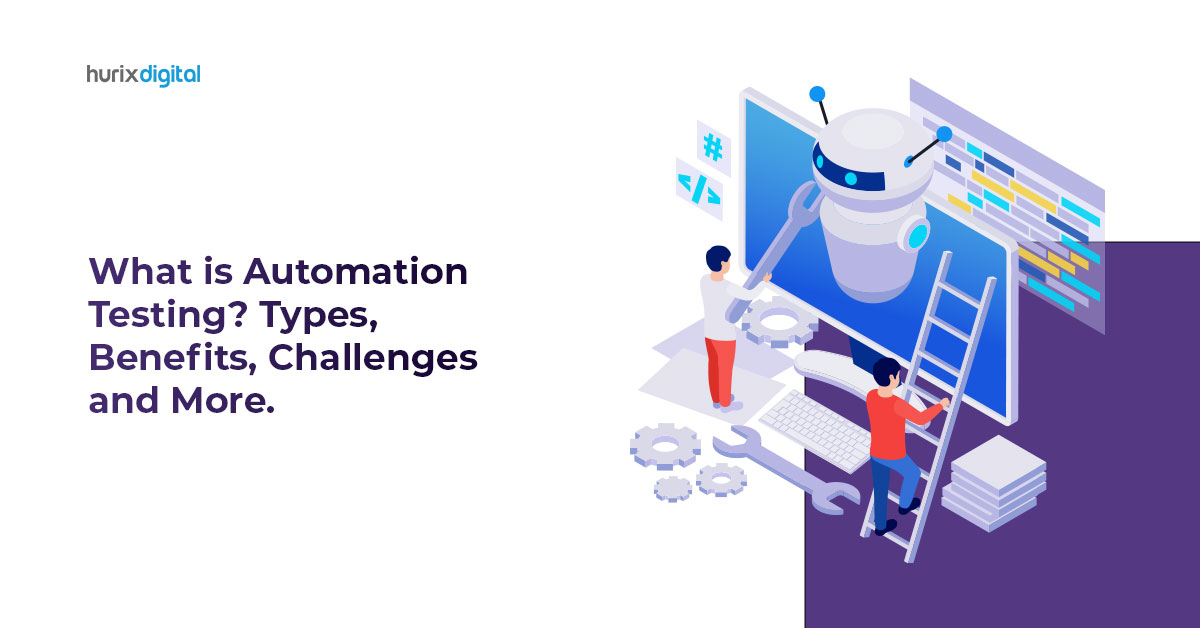
What is Automation Testing? Types, Benefits, Challenges, and More
Summary
Understand automation testing, including its types, benefits, challenges, and how it can enhance software development processes by improving efficiency and accuracy.
Automation testing refers to crafted frameworks utilized to test software applications to minimize human input while maximizing output quality. It’s carried out with the aid of automation software, which manages the implementation of tests following the prepared test scripts.
Automating the testing process reduces costs for an organization, produces high-quality work, and saves time.
Automation testing has replaced over 50% of manual testing in 46% of cases. Also, 55% of companies have admitted that automated testing has improved quality.
Read on to explore more about automation testing.
Types of Automation Testing
Automation testing is divided into five main categories, each with a different set of applications. The main categories of automation testing tools are as follows:
1. Code Analysis
Various testing tools, such as static and dynamic analysis, are included in code analysis and can be used to conduct different tests.
For example, some test for usability while others seek out security flaws. The developer is required to create code to execute these tests. But once that task is done, the remaining process can be conducted without human intervention.
2. Unit Tests
When developing software or a product for a specific platform, such as Android for Motorola or iOS for iPhone, unit testing is conducted to verify each component. This indicates that the software is thoroughly examined before the final release.
Although developers can write these tests, automation testing has eliminated the need. Businesses typically use these tests during the software development stage of production.
3. Integration Tests
Generally referred to as end-to-end tests, integration tests are comparatively trickier than other tests. In this process, all the application models are combined into a group and tested all at once.
This implies that communication among all the modules can be assessed to understand how efficiently they function together.
4. Automated Accepted Tests
Similar to BDD (behavior-driven development) and AATDD (automated acceptance test-driven development), the AAT (Automated Accepted Test) is developed prior to the creation of new features. It generally involves collaboration between the business, the developers, and quality assurance and establishes standards for new features to meet. They can additionally be applied as regression tests in the future.
5. Smoke Tests
Smoke testing is carried out to determine if the product is secure. It is returned to developers as an “unstable build” when it is not secure. Then, if more tests are required, they can determine the reason behind the issue in the first place.
Tests That Should Be Automated
The entire testing process cannot be automated at once. Therefore, you must choose the tests that require automation first. Let’s discover the types of tests that can be benefitted from automation:
- Tests that run the risk of failing due to human error.
- Tests that are repeated and monotonous.
- Tests need numerous sets of data.
- Tests that cannot be carried out manually.
- Tests that would take a long time to carry out manually.
- Tests that require a variety of software or hardware platforms to function.
Upsides of Automation Testing
Automation technology is being used by SaaS companies all over the world because software testing comes with several advantages. Some of the key benefits of automation testing for software development are listed below:
1. Provides Detailed Reporting
Test cases for different scenarios are carefully crafted for automation testing. Such preplanned sequences can cover a lot of ground and produce in-depth reports that are impossible for a human. Moreover, such in-depth analysis and reporting are conducted and delivered within a very short period.
2. Impressive Bug Detection
Finding bugs and other flaws in a product is among the primary reasons to test it. This procedure can be made simpler through automation testing. Plus, automation testing can analyze a broader test coverage than a human can in a short time.
3. Simplifies Testing Process
Most SaaS and tech organizations regularly test their products in daily operations. The key is to keep it as basic as you can. The utilization of automation is highly advantageous in this case. The premade test scripts can be reused to smooth the flow.
4. Cost and Time Efficient
Testing takes a lot of time. Automation can become more cost-effective, although it might require an initial investment. In many circumstances, team members are no longer needed for time-consuming manual testing. They can save that time and focus on improving other areas. It’s safe to say that automation testing enhances workflow.
5. Diminishes the Need for Human Supervision
The tests can be carried out anytime, even overnight, without human supervision. Additionally, when automatically generated, this can lessen the potential for human mistakes.
Challenges Faced In Automation Testing
However, testing is measured by its success rate, not testing time. Therefore, comprehending the drawbacks of implementing automation testing in any company is crucial.
-
Network Issues
It has been noted that network disconnection and network stability have been among the most challenging issues for automation testing. A stable network connection is necessary to access third-party services and databases smoothly.
-
Cost Factor
The cost of automation testing can be too high for some organizations to afford. Even though the benefits are vast, many organizations still lack enough funds to invest in automation testing. An open-source alternative can be helpful in this situation, but that involves training and maintenance costs, which are also quite high.
-
Testing Accuracy
Organizations must communicate using a single channel to avoid chaos during automation testing. Attempting to execute automation testing based on outdated information will result in false outputs, one of the most frequently made errors.
Conclusion
The time has come to adopt new technology and learn strategies that will enhance the efficacy of your workers. Automation testing is the best way to achieve optimal output through software development.
If you are searching for an automation testing solution to handle various aspects of software development, try HurixDigital.
Get in touch with HurixDigital today to incorporate the best-in-class tools for automation testing!
Ref:




